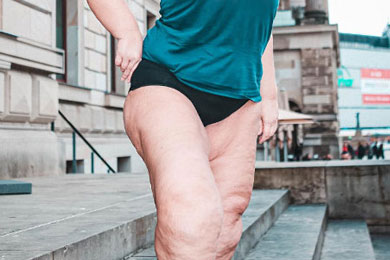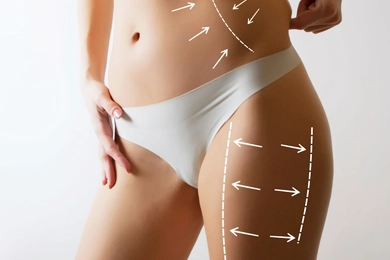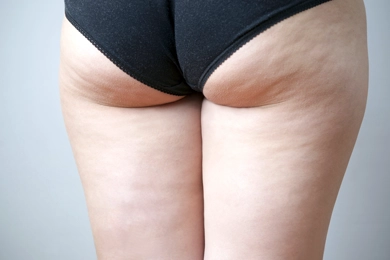
Lipedema, sometimes known as the "painful fat syndrome," is still rarely discussed in the context of conventional medicine.
As a result, many people with lipedema struggle with a lack of knowledge, inaccurate diagnosis, and ineffective treatments. The following thorough guide aims to educate, empower, and offer hope in those who are navigating the uncertainties of this condition, whether they are you or someone you love.
Fundamentally, lipedema is a gradual, chronic condition in which abnormal amounts of fat collect symmetrically on the arms and legs. This fat is different from typical fat in that it cannot be significantly reduced by conventional weight loss techniques, such as strict diets and exercise.
Due to some outward similarities, lipedema may be confused for general fat or lymphedema. There are significant differences, though. While lipedema is symmetrical and mainly restricted to the limbs, obesity shows up as a uniform distribution of fat. On the other side, swelling brought on by fluid retention is called lymphedema. For effective treatment and management, it's essential to comprehend these distinctions.
The fact that lipedema primarily affects women is startling. The start of the condition is thought to be significantly influenced by hormonal changes or imbalances, such as those that occur during puberty, pregnancy, or menopause. There have been sporadic cases of men with the illness, despite it being extremely unusual.
Lipedema develops gradually over a number of stages:
Although lipedema's physical effects are obvious, its emotional costs are less conspicuous. Lipedema can cause crippling discomfort, increased susceptibility to bruising, and movement problems in addition to being an aesthetic issue. These difficulties, along with society's frequently critical gaze, can leave people with feelings of loneliness, sadness, and low self-worth.
Unfortunately, many medical professionals lack basic knowledge regarding lipedema. Patients are commonly misdiagnosed as having lymphedema or just needing to reduce weight as a result of this knowledge gap. There is an urgent need to raise awareness and educate medical professionals.
Investigating lipedema's genetic components reveals interesting patterns. The fact that the illness frequently manifests across generations points to a genetic predisposition. Although further research is required in this area, people with relatives who are showing signs of lipedema should be extra cautious.
It cannot be emphasized enough that lipedema-related fat is distinct from other types of fat. This fat is persistent despite strict dietary restrictions and intense exercise. This resiliency can cause patients to feel extremely frustrated and worsen their sense of helplessness.
Although lipedema is currently incurable, there are a number of treatments that can be used to control its symptoms:
Always seek the advice of a medical expert before taking any action.
In order to raise awareness of lipedema, advocacy organizations, empowered patients, and committed researchers have all played a critical role. More information is being shared, better treatments are being researched, and more people are getting the right diagnosis earlier in the course of the disease. Patients with lipedema are entering a more optimistic era as a result of this rising awareness.
Conclusion: Understanding lipedema is the first, most important step on the road to successful care and advocacy, despite ongoing hurdles. Knowledge is power, and power can change people's lives. Consult with a medical expert who is knowledgeable with lipedema if you think you or a loved one may be displaying symptoms of the disorder. And keep in mind that you are your own staunchest advocate when it comes to your health and wellbeing.
 New Age in Body Shaping: Embracing VASER Liposuction
New Age in Body Shaping: Embracing VASER LiposuctionAesthetic technologies have experienced significant advancements in their pursuit of achieving a flawless physique, introducing innovations that are both efficacious and minimally intrusive. ...
 Can VaserLipo Help with Cellulite?
Can VaserLipo Help with Cellulite?Cellulite is the lumpy, cottage cheese-like condition of the skin that most people, particularly women, detest. Numerous treatments and therapies are sought by a sizeable portion of the adult population who ...